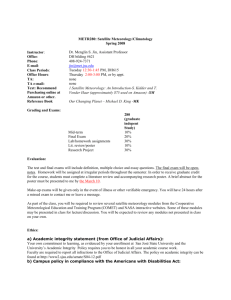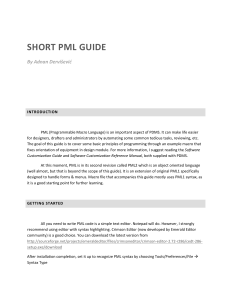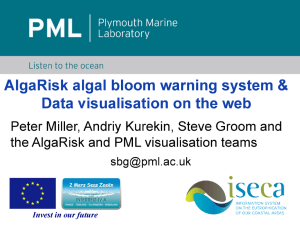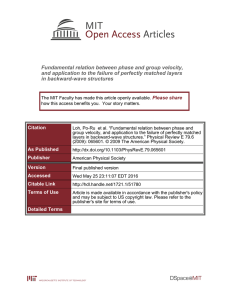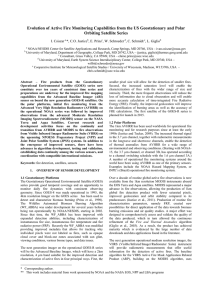ISECA Deliverable D2.4a “A description of the EO DB at
advertisement
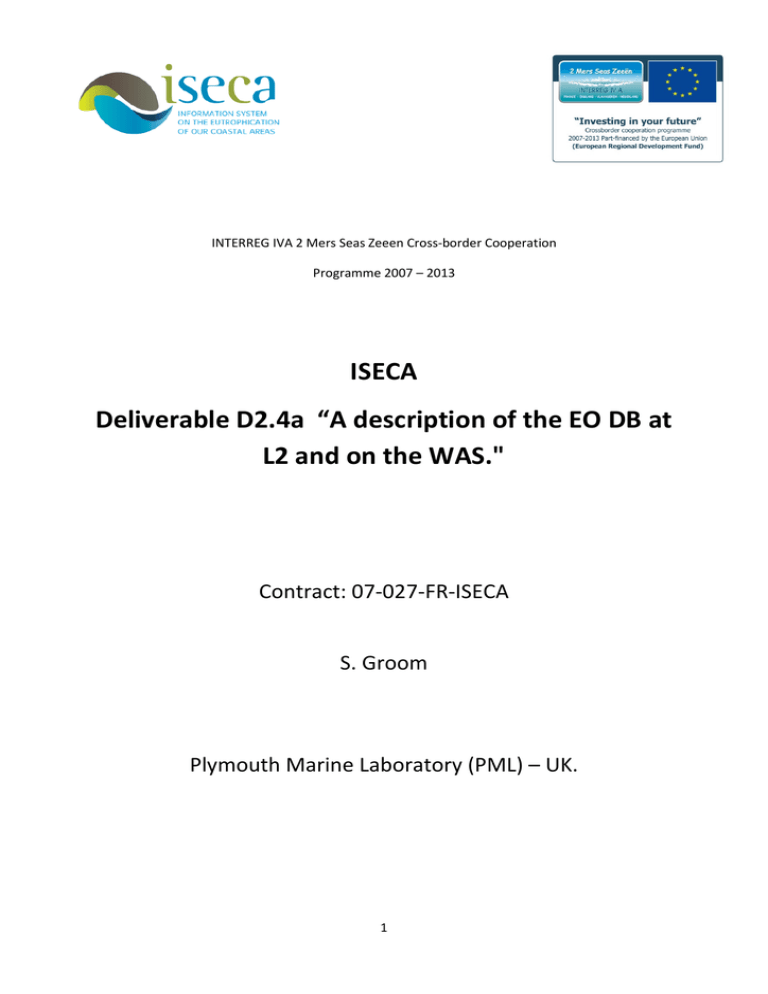
INTERREG IVA 2 Mers Seas Zeeen Cross-border Cooperation Programme 2007 – 2013 ISECA Deliverable D2.4a “A description of the EO DB at L2 and on the WAS." Contract: 07-027-FR-ISECA S. Groom Plymouth Marine Laboratory (PML) – UK. 1 Contents 1. SUMMARY A description of the EO DB at L2 and on the WAS....................................................... 3 2 1. SUMMARY A description of the EO DB at L2 and on the WAS. The aim of this deliverable is to provide a brief description of the level 2 data on the WAS with the description itself on the WIS. It is the first part of Deliverable D2.4: the second part is a comprehensive validation report on the EO data. The description of L2 data in the ISECA database is available on the WIS at http://www.iseca.eu/images/dels/PML%20L2UK.pdf The text is given below PML Level 2 EO database The level 2 Earth Observation data held at Plymouth Marine Laboratory (PML) comprise data from a number of ocean colour sensors including the NASA Moderate Resolution Imaging Spectroradiometer (MODIS) carried on the Aqua satellite (2002- to date: e.g. Figure 1); European Space Agency Medium Resolution Imaging Spectrometer (MERIS) carried on Envisat satellite (2002 – 2012) and the Sea-viewing Wide Field of View Sensor (SeaWiFS) carried on Orbview-2 (1997-2010); and the thermal infra-red Advanced Very High Resolution Radiometer (AVHRR) sensor carried on the NOAA series of satellites. In addition PML has an archive of full resolution L2 MERIS data. Level 2 data comprise geophysical quantities such as water reflectance or water-leaving radiance or the sea-surface brightness temperature as well as a number of geophysical quantities such as seasurface temperature (from MODIS and AVHRR), diffuse attenuation coefficient or biological quantities such as chlorophyll-a concentration, suspended particulate matter concentration or inherent optical properties (see, for example, http://oceancolor.gsfc.nasa.gov/cgi/algorithms.cgi). The level 2 data are stored as individual sensor overpasses and also as mapped images covering a standard area covering the ISECA 2seas region. These mapped products can be inter-compared, for example, to see how SST and chlorophyll-a are inter-related. Figure 1. Level 2 MODIS 500m mapped chlorophyll-a image from 24 Jul 2012 12:45 UT. The Web-based Application Server is described in detail in Deliverable D3.1 – “The Web-based Application Server: Combining Earth Observation with In-Situ Data and Modelling.” The data available in the WAS comprise a full suite of products from the MODIS instrument as well as sea3 surface temperature (SST) products from the AVHRR sensor. The data are stored on the PML server, downloaded from PML using Open Geospatial Consortium compliant protocols and visualised on the user’s browser. This is efficient and avoids the need to either store the full EO archive at VITO (where the WAS is based) or on the user’s own workstation. An example of daily MODIS chl-a for 3 September 2012 accessed via the WAS is shown in Figure 2 below Figure 2. Example MODIS chl-a image available in the WAS 4
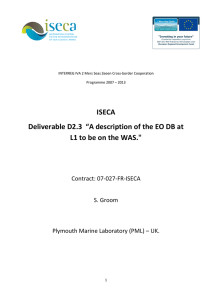

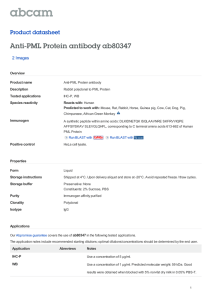

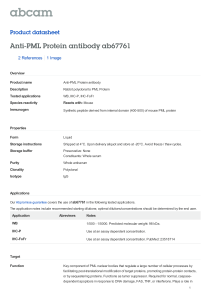
![Anti-PML Protein antibody [C7] ab96055 Product datasheet 2 Images Overview](http://s2.studylib.net/store/data/012095338_1-4868c878433c7243c74f795acef6727f-300x300.png)
